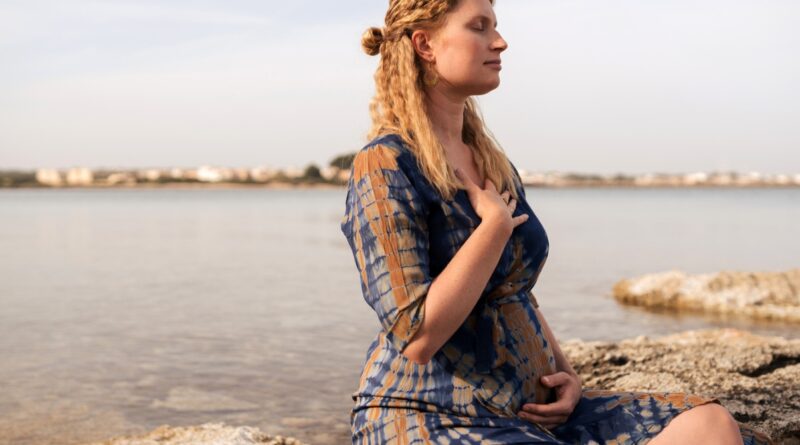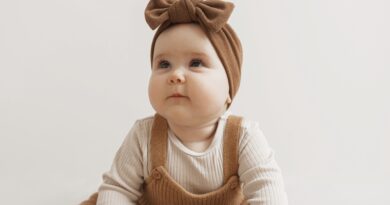Becoming a mother helped me connect to the natural world: Birthing an ecological self
I grew up among ducks, geese, peacocks, goats and gardens. Despite being raised close to the natural world, I can’t say I maintained an intimate relationship with it apart from enjoying the beauty and complaining about the more inconvenient aspects. That changed during pregnancy.
The culturally induced line that I was told separated me from the animal kingdom dissolved. The experience of being pregnant and undergoing the process of labor initiated my return to the wild unknown. I was a wild animal carrying another being from seed to human form. And, like most mammals, I became fiercely protective of my offspring. An age-old intelligence that lay dormant until pregnancy burst through as if it had been there all along, breathing softly under the surface of my so-called civilized self.
Thus began my journey into matrescence, the developmental transition to motherhood. Gazing down at my pregnant belly against the backdrop of a sleepless city, I experienced a deep-seated disconnection from my body, community and the natural world. Modern life had not prepared me for this transition. I did not know how to be feral. Yet, I was the kangaroo that carried its joey in a pouch made from its own skin. I was a mammal too, fully capable of facilitating the life of another being. As I imagined a kangaroo hoping down the sidewalk in a concrete jungle, I panicked. I craved vibrant greens, fresh air and biodiversity. I needed space to explore my own wilderness.
Research now suggests that maternal exposure to natural environments can promote healthy fetal growth. It is well documented that spending time in nature or bringing nature into your everyday life can improve physical and mental health. According to Edward O. Wilson’s biophilia hypothesis, an innate connection and interdependence exists between humans and more-than-humans that includes psychological wellness, personal identity, and a sense of belonging to something greater than the self. Nature connection is especially important for the healthy development of a woman’s sense of self. It has been suggested that women who spend time in natural settings are more likely to maintain a healthy body image.
Gaining wider attention in recent years is the concept of the ecological self, or aspects of the self that capture the human capacity to relate to other living beings and the earth
itself. Dominated by a dualistic opposition, nature and culture remain at odds and separate in the current western worldview, though this is beginning to unravel as it becomes more widely understood that dualism is inconsistent with the known laws of science. The self is a composition of the gifts we are born with and an ongoing developmental process of relationality.
The ecological aspect of the self is a compilation of our relational, ongoing and iterative process of moving through ecosystems. If we are embedded in the natural environment, and natural environments (i.e.gut bacteria) are embedded in us, it follows that the ecological self is an essential part of us. In many indigenous cultures, realizing wholeness typically entails a rite of passage or process of moving from a disconnected human-centered consciousness to an interconnected earth-centered consciousness. Not surprisingly, it is this developmental transformation that is necessary for humanity’s ecological sustainability.
Ecopsychologists argue in favor of nature connection during matrescence. The process of developing an earth-centered consciousness can be accelerated during major life transitions and begins with an awareness of being embedded in an animate world, setting the stage for an ecological self to emerge. The realization that one is embedded in an animate world simply means to come to terms with the possibility that everything is alive, including the Earth and its biological systems. Supportive containers are needed for mothers to heal the human-centric split from nature, and to redefine themselves inclusive of the ecological dimensions of experience.
This process may also support maternal health. Coming to terms with the wild unknowns of human pregnancy and my place in the web of life may have been a lot easier had I been part of a supportive community of women to navigate the transition and rite of passage to motherhood.
Sources
Clayton S, Opotow S, eds. Identity and the natural environment: The psychological significance of nature. Cambridge, MA: MIT Press; 2003:45-65.
Davis A, Athan A. Ecopsychological Development and Maternal Ecodistress During Matrescence. Ecopsychology. September 2023;15(3).
Jordon M. Nature and therapy: Understanding counselling and psychotherapy in outdoor space. Routledge; 2015.
Louv R. The last child in the woods: Saving our children from nature-deficiency disorder. Algonquin; 2008. Louv R. The nature principle: Reconnecting with life in a vital age. Algonquin; 2012. Louv R. Vitamin D: 500 ways to enrich the health and happiness of your family and community. Algonquin; 2016.
Naess A. Self-Realization: An Ecological Approach to Being in the World. The Trumpeter: Journal of Ecosophy. 1987;4(3).
Swami V, Robinson C, Furnham A. Positive Rational Acceptance of Body Image Threats Mediates the Association Between Nature Exposure and Body Appreciation. Ecopsychology. 2022;14(2):118-125.
Toda M, Avraam D, Cadman T, Fossati S, et al. Exposure to natural environments during pregnancy and birth outcomes in 11 European birth cohorts. Environment International. 2022;170.




